Low loader trailers are indispensable in the logistics and transportation industry, offering unparalleled versatility and efficiency for moving oversized and heavy cargo. At CarMax Trailer, a leader in semi-trailer manufacturing, we understand the critical role that precise trailer dimensions play in optimizing transport operations. This guide delves into the intricacies of low loader trailer dimensions, ensuring you make informed decisions for your transportation needs.
Understanding Low Loader Trailers
Low loader trailers, also known as lowbed trailers, are characterized by their lower deck height, which facilitates the transportation of exceptionally tall and heavy machinery. These trailers are pivotal in industries such as construction, agriculture, and industrial manufacturing, where transporting large equipment is a routine necessity.
Key Features of Low Loader Trailers
- Lower Deck Height: Enhances stability and allows for taller loads.
- High Load Capacity: Capable of handling heavy weights, often exceeding regular trailer limits.
- Adjustable Axles: Provide flexibility in load distribution and maneuverability.
- Robust Construction: Built with high-strength materials to endure demanding transportation tasks.

Standard Dimensions of Low Loader Trailers
Understanding the standard dimensions is crucial for ensuring compatibility with your cargo and compliance with transportation regulations. Below is a detailed breakdown of typical low loader trailer dimensions produced by CarMax Trailer.
Length
Low loader trailers come in various lengths to accommodate different cargo sizes. Standard lengths include:
| Trailer Length (Feet) | Use Case |
|---|---|
| 24 ft | Small to medium machinery |
| 30 ft | Medium to large equipment |
| 40 ft | Large industrial machinery |
Width
The width of a low loader trailer is typically uniform to comply with road transport regulations, ensuring safe and legal transport across regions.
- Standard Width: 8.5 feet (102 inches)

Height
One of the defining features of low loader trailers is their reduced height, which facilitates the transportation of tall loads without exceeding height restrictions.
- Deck Height: Approximately 2 feet above the ground
- Overall Height: Varies based on load but designed to stay within legal limits
Weight Capacity
The weight capacity is a critical dimension that determines the suitability of a trailer for specific loads.
- Single Axle: Up to 20,000 lbs
- Tandem Axle: Up to 40,000 lbs
- Heavy-Duty Models: Can exceed 60,000 lbs
Axle Configuration
The number and type of axles significantly influence the trailer’s load capacity and maneuverability.
| Axle Type | Description | Load Capacity |
|---|---|---|
| Single Axle | One axle located at the rear | Up to 20,000 lbs |
| Tandem Axle | Two axles spaced apart for better support | Up to 40,000 lbs |
| Triple Axle | Three axles for maximum load distribution | Up to 60,000 lbs |

Customizing Low Loader Trailer Dimensions
At CarMax Trailer, we recognize that each transportation task is unique. Therefore, we offer customization options to tailor the trailer dimensions to your specific requirements.
Adjustable Deck Length
Our low loader trailers feature adjustable deck lengths, allowing you to modify the trailer to fit different cargo sizes seamlessly. This flexibility ensures that you can transport a wide range of equipment without the need for multiple trailers.
Modular Axle Systems
CarMax Trailer’s low loaders incorporate modular axle systems, enabling easy adjustments to the number and spacing of axles. This customization ensures optimal load distribution and improved maneuverability, catering to diverse transportation needs.

Enhanced Stability Features
To accommodate heavier and taller loads, our low loaders can be equipped with additional stabilizing elements such as:
- Extended Base Frames: Provide a wider footprint for enhanced stability.
- Heavy-Duty Suspension Systems: Absorb shocks and maintain load integrity during transit.
- Advanced Braking Systems: Ensure safe and reliable stopping power, even under heavy loads.
Comparative Analysis: Standard vs. Custom Low Loader Trailers
Choosing between standard and custom low loader trailers depends on your specific transportation requirements. Here’s a comparative analysis to help you make an informed decision.
| Feature | Standard Low Loader | Custom Low Loader |
|---|---|---|
| Deck Length | Fixed options (24, 30, 40 ft) | Adjustable to unique specifications |
| Axle Configuration | Limited to single or tandem | Modular, up to triple or more |
| Load Capacity | Up to 40,000 lbs | Customizable up to 60,000+ lbs |
| Stability Enhancements | Basic features | Advanced options available |
| Cost | Lower initial investment | Higher upfront cost, tailored value |
Factors Influencing Low Loader Trailer Dimensions
Several factors dictate the optimal dimensions of a low loader trailer for your specific needs. Understanding these factors ensures that you select a trailer that maximizes efficiency and compliance.
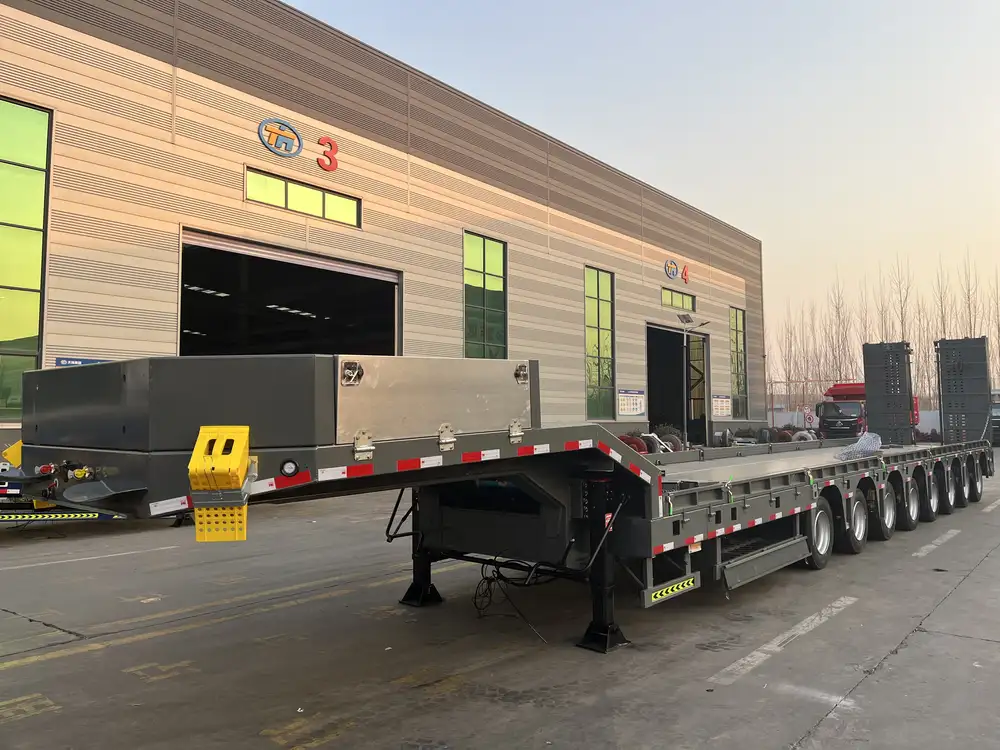
Cargo Size and Weight
The primary consideration is the size and weight of the cargo. Oversized or exceptionally heavy loads necessitate trailers with greater deck lengths, higher weight capacities, and enhanced stabilizing features.
Transportation Regulations
Compliance with national and regional transportation regulations is paramount. Low loader trailers must adhere to specific dimensions to ensure safe and legal transport on public roads. This includes adhering to height, width, and weight restrictions.
Route and Terrain
The nature of the routes and terrain over which the trailer will travel influences its design. Rough terrains or urban environments with tight turns may require more robust and maneuverable trailer configurations.
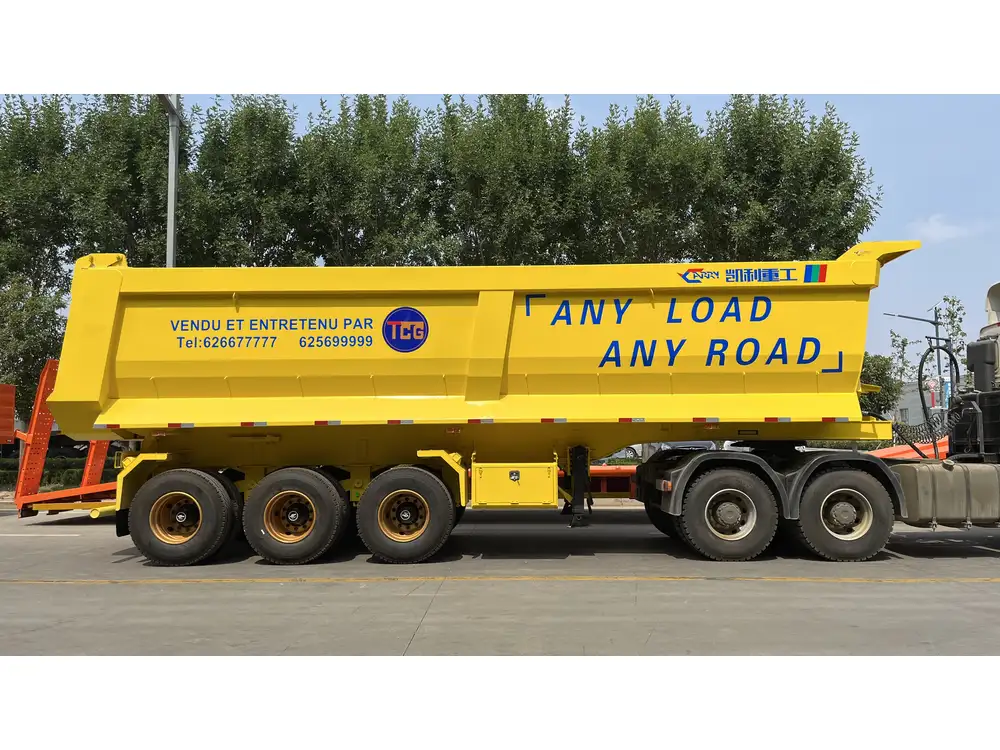
Frequency of Use
High-frequency use in demanding logistics operations may benefit from trailers with reinforced structures and advanced maintenance features to ensure durability and longevity.
Optimizing Low Loader Trailer Dimensions for Efficiency
Maximizing the efficiency of your low loader trailer involves careful consideration of its dimensions relative to your operational needs. Here are strategies to optimize trailer dimensions for enhanced performance.
Maximizing Deck Space
Efficient use of deck space minimizes the number of trips required for transportation, reducing operational costs and time. CarMax Trailer designs trailers with optimized deck layouts to maximize usable space without compromising stability.

Balancing Load Distribution
Proper load distribution is critical for safe transport. Our adjustable axle systems allow you to finely tune the load balance, preventing overloading on specific axles and enhancing overall trailer stability.
Enhancing Maneuverability
Trailers with adjustable dimensions can be customized for better maneuverability in various environments. Features such as steerable axles and extended pivot points contribute to easier handling, especially in tight or complex routes.
Streamlining Maintenance
Simple and accessible design features facilitate easier maintenance, ensuring that your trailer remains in optimal condition with minimal downtime. CarMax Trailer incorporates maintenance-friendly designs to support your operational efficiency.

Technological Innovations in Low Loader Trailer Dimensions
Advancements in technology have revolutionized the design and functionality of low loader trailers. At CarMax Trailer, we integrate cutting-edge technologies to enhance trailer performance and adaptability.
Smart Suspension Systems
Our low loader trailers are equipped with smart suspension systems that automatically adjust to varying load weights and road conditions, ensuring a smooth and stable ride.
IoT Integration
By integrating Internet of Things (IoT) technologies, our trailers offer real-time monitoring of load conditions, trailer health, and performance metrics, enabling proactive maintenance and enhanced operational oversight.
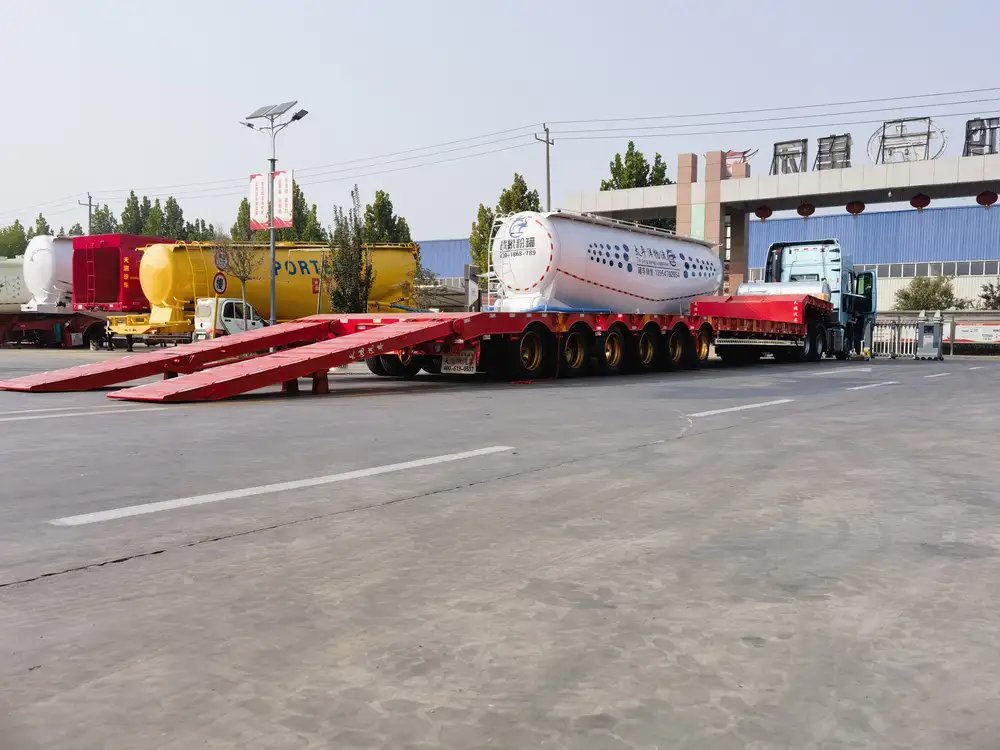
Advanced Material Usage
Utilizing high-strength, lightweight materials in trailer construction reduces overall weight while maintaining structural integrity, resulting in improved fuel efficiency and payload capacity.
Aerodynamic Designs
Innovative aerodynamic designs minimize drag, enhancing fuel efficiency and reducing transportation costs. CarMax Trailer’s low loaders feature streamlined profiles that contribute to both performance and environmental sustainability.
Choosing the Right Low Loader Trailer Dimensions for Your Needs
Selecting the appropriate trailer dimensions requires a thorough assessment of your transportation requirements. Here’s a step-by-step approach to guide your decision-making process.

Step 1: Assess Your Cargo
Evaluate the dimensions, weight, and nature of the equipment or machinery you intend to transport. Consider factors such as height, length, width, and total weight to determine the necessary trailer specifications.
Step 2: Determine Operational Requirements
Analyze your operational landscape, including the frequency of transport, typical routes, and environmental conditions. This assessment will inform the necessary durability, maneuverability, and suspension features of the trailer.
Step 3: Consult Regulatory Standards
Ensure that your trailer dimensions comply with local, regional, and national transportation regulations. This includes height limits, weight restrictions, and any specific requirements related to oversized or heavy loads.
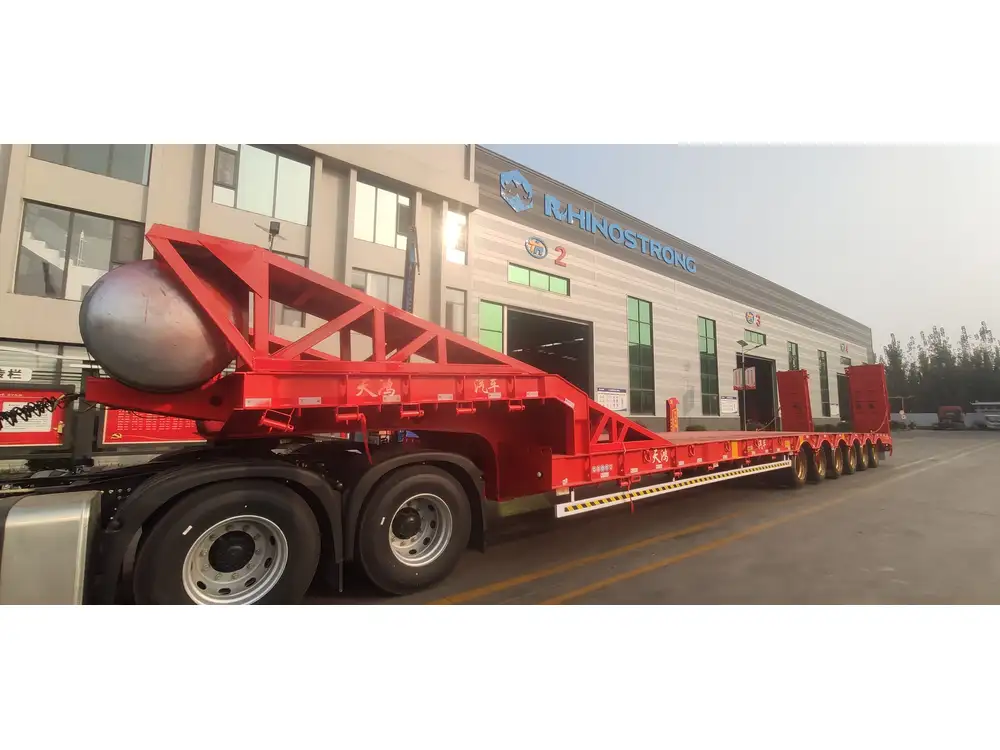
Step 4: Explore Customization Options
If standard dimensions do not meet your needs, explore customization options with CarMax Trailer. Tailored solutions can provide the exact specifications required for your unique transportation challenges.
Step 5: Evaluate Budget and ROI
Consider the initial investment against the long-term benefits of tailored dimensions. Customized trailers may have a higher upfront cost but can offer significant returns through increased efficiency and reduced operational costs.
CarMax Trailer: Your Partner in Low Loader Solutions
At CarMax Trailer, our commitment to excellence ensures that you receive low loader trailers that are perfectly aligned with your transportation needs. Our expertise in trailer dimensions and customization options guarantees optimal performance, safety, and compliance.
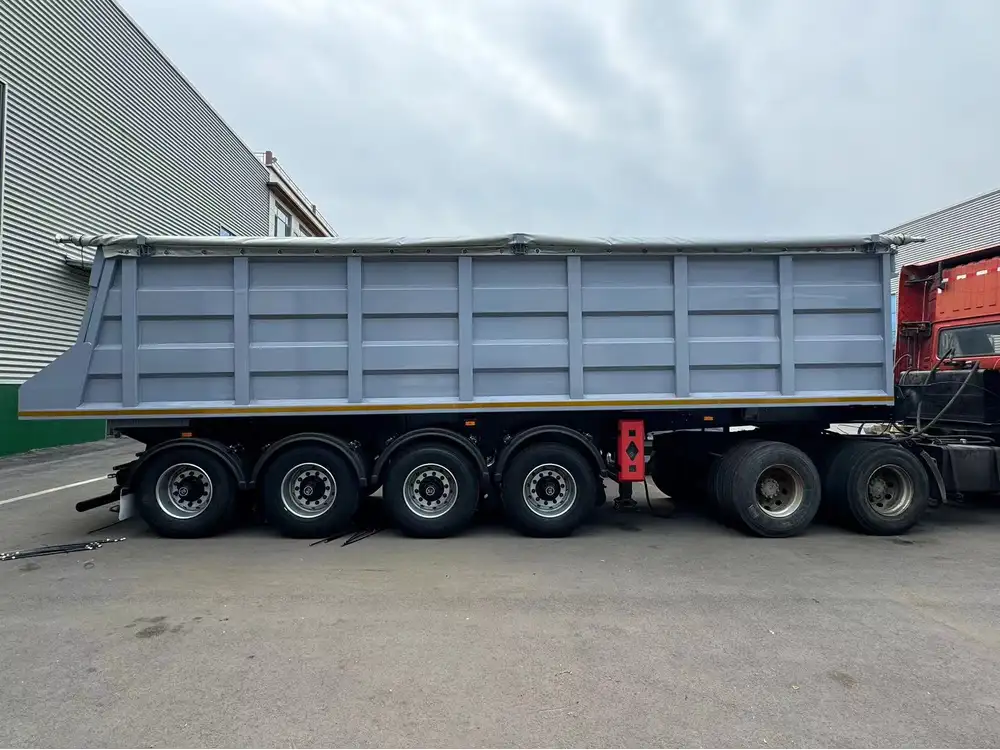
Why Choose CarMax Trailer?
- Expertise: Decades of experience in manufacturing high-quality low loader trailers.
- Customization: Tailored solutions to meet specific dimensional and performance requirements.
- Innovation: Incorporation of the latest technologies for enhanced trailer functionality.
- Reliability: Durable and robust trailers designed for longevity and consistent performance.
- Support: Comprehensive customer support from selection to maintenance.
Conclusion
Low loader trailer dimensions are a fundamental aspect of efficient and safe transportation operations. At CarMax Trailer, we provide a wide range of trailer dimensions and customization options to cater to diverse transportation needs. By understanding and optimizing these dimensions, you can enhance your logistics efficiency, ensure regulatory compliance, and achieve operational excellence.
Frequently Asked Questions

1. What are the standard deck heights for low loader trailers?
Standard deck heights for low loader trailers typically range around 2 feet from the ground, allowing for the transport of taller loads while maintaining stability and compliance with height restrictions.
2. Can CarMax Trailer customize the length of a low loader trailer?
Absolutely. CarMax Trailer offers adjustable deck lengths to accommodate varying cargo sizes, ensuring that you have the flexibility to transport a wide range of equipment efficiently.
3. What is the maximum weight capacity of a CarMax low loader trailer?
Our low loader trailers can be customized to handle weights exceeding 60,000 lbs, depending on your specific requirements and the axle configuration selected.
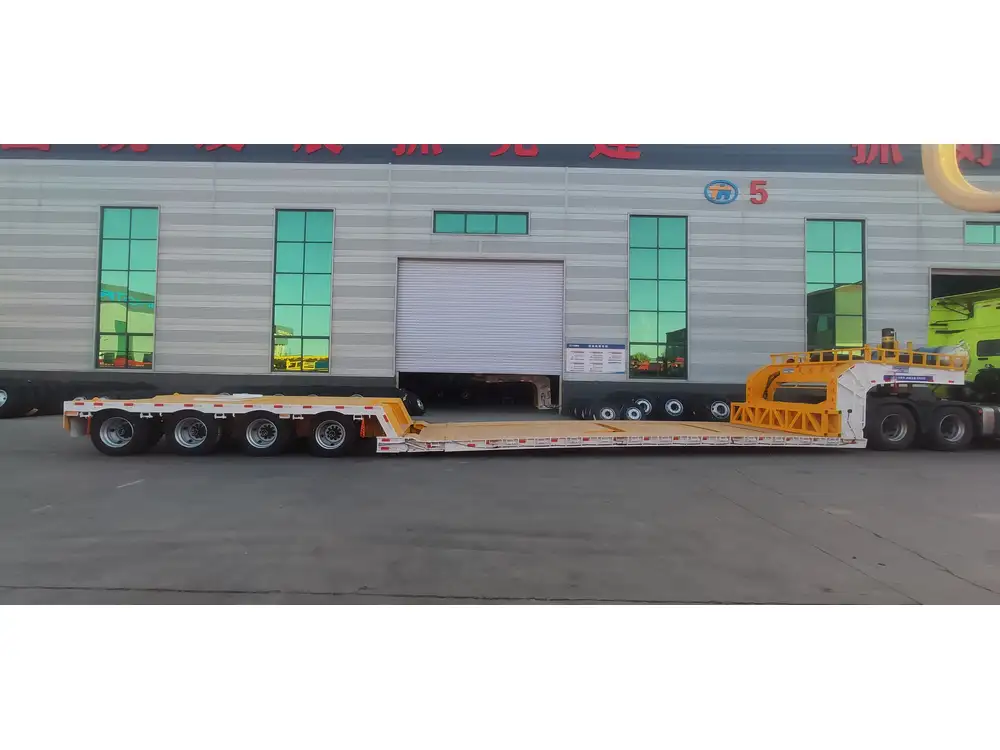
4. How do adjustable axles improve trailer performance?
Adjustable axles allow for optimal load distribution and improved maneuverability, enhancing the overall stability and handling of the trailer under different load conditions and terrains.
5. What technological features are available in CarMax low loader trailers?
CarMax low loader trailers feature smart suspension systems, IoT integration for real-time monitoring, advanced lightweight materials, and aerodynamic designs to enhance performance and efficiency.



